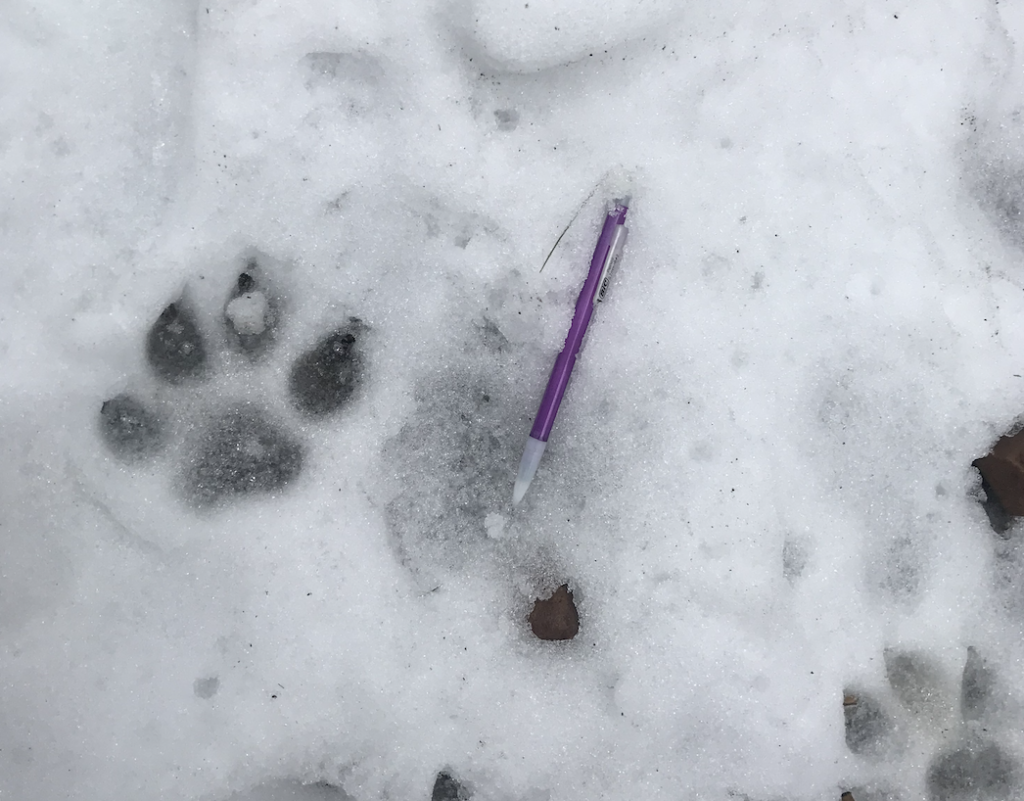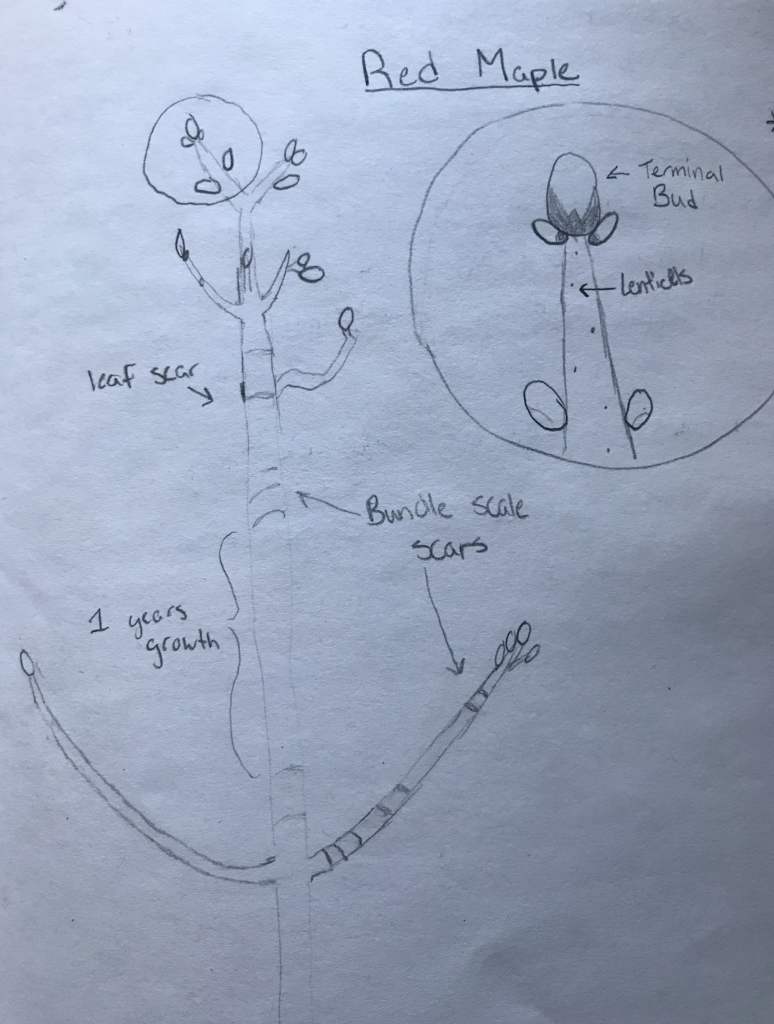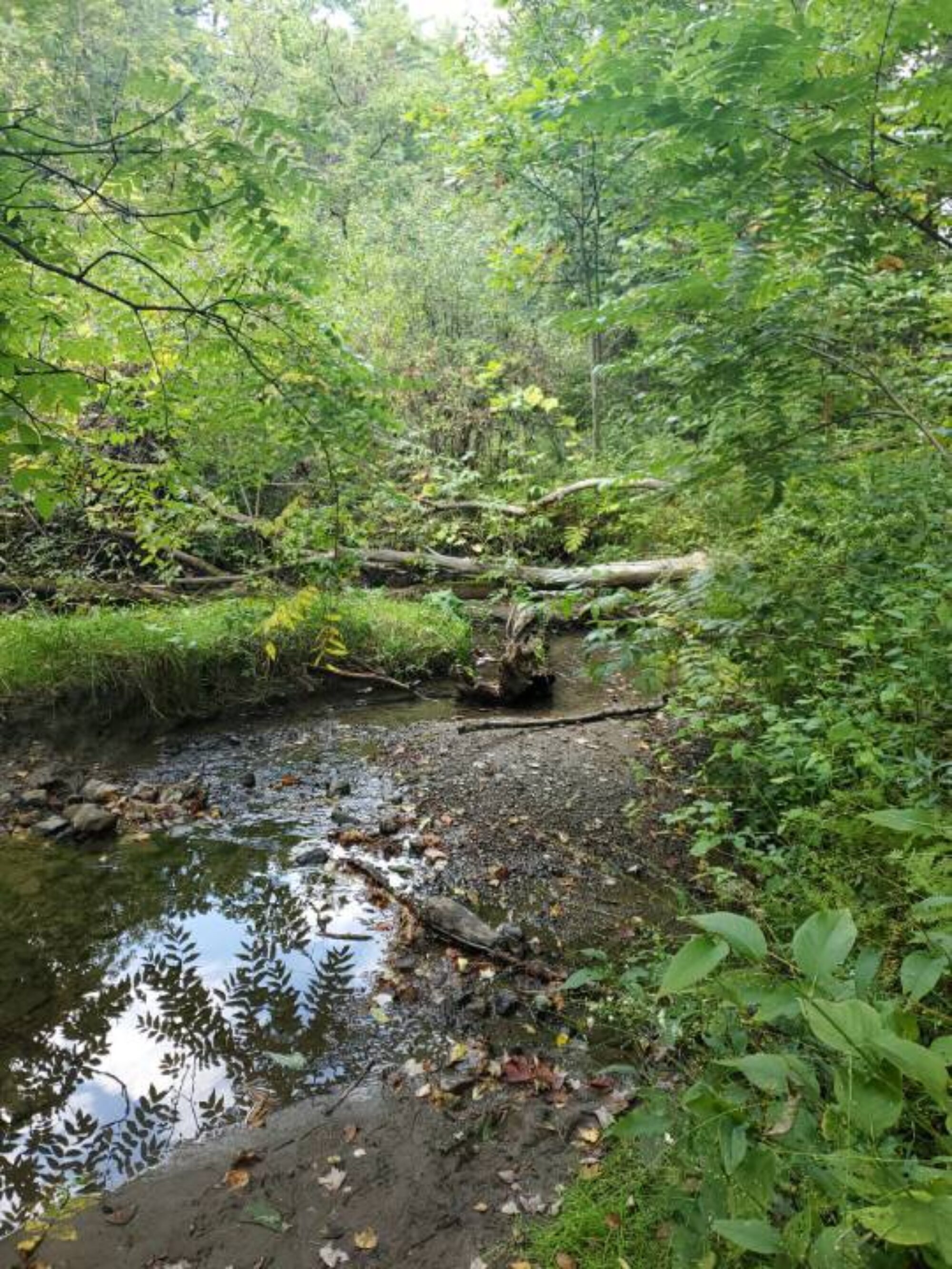Wildlife Activity
This was my first time back to my blog site since before break. While it was cool to be back, the site had changed a lot over the time away. For example, there was a noticeable difference in wildlife. Besides a few birds that flew over the site, the creek seemed pretty “dead” overall. The wildest thing I noticed at first were paw prints from dogs being walked on the trail. There were no visible fish, water gliders, bugs, or any other wildlife in the area. That being said, I was able to find different tracks that indicated activity at my site. I’m not sure what they were, but it was nice to know that Centennial still had some natural aspects to it even with all of us visitors. I used a pencil to scale the tracks and think some of them could come from, besides the domestic dog tracks, diagonal walkers or bounders. In this area, that may include species like fox and weasel or mink.

Figure 1 
Figure 2 
Figure 3 
Figure 4
Winter Twig ID/ Sketch
At my site, as I have mentioned in previous blog posts, there are a variety of different deciduous tree species. The most prevalent one to my site is an Eastern Black Walnut. This tree sits on the bank the stream bends around. There is also a Red Maple and Red Oaks. Besides this, most of the surrounding trees are conifers. While taking a picture of a twig of a species I am unsure of, I got distracted by the moss on the branch and ended up focusing the picture on that. However, the picture of the Eastern Black Walnut is easy to see regarding the different parts of the twig.

Figure 5 
Figure 6
I decided to draw a picture of a Red Maple twig, but I didn’t include it due to the quality of the picture. I also drew it as if it were later in the season starting to bud for the purpose of labeling more twig parts.

Phenological Changes
The site has definitely undergone phenological changes since the last time I was here in December. There are a few inches of snow in the area, where it wasn’t packed down from those of us visiting Centennial. It is the type of snow ideal for a snowball fight. As I approached the stream, you could hear it flowing. This may be the deepest I’ve seen it yet. There wasn’t much sign of wildlife as there had been earlier in the school year. Though I did find tracks indicating “life”, there wasn’t much growing on this cold January Monday. Similarly to seeing paw prints in the mud, they are now visible in the snow along the trail. More erosion seems to have occurred along the bank by the river. It makes me wonder how the Eastern Black Walnut has been impacted, and how it will continue to be impacted.

Figure 8 
Figure 9 
Figure 10 
Figure 11
Field Notes

